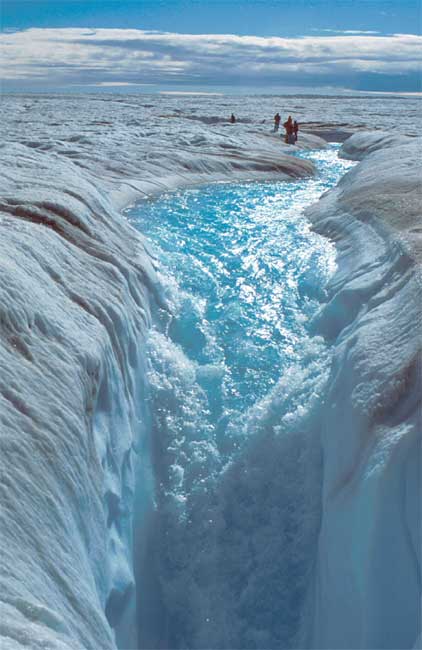
Engineering our way out of global climate warming may not be as easy as simply reducing the incoming solar energy, according to a team of University of Bristol and Penn State climate scientists.
Designing the approach to control both sea level rise and rates of surface air temperature changes requires a balancing act to accommodate the diverging needs of different locations.
“Basic physics and past observations suggest that reducing the net influx of solar energy will cool the Earth,” said Peter J. Irvine, graduate student, University of Bristol, UK, and participant in the Worldwide Universities Network Research Mobility Programme to Penn State. “However, surface air temperatures would respond much more quickly and sea levels will respond much more slowly.”
Current solar radiation management approaches include satellites that block the sun, making the Earth’s surface more reflective or mimicking the effects of volcanoes by placing aerosol particles in the upper atmosphere.
“These solar radiation management approaches could be cheaper than reducing carbon dioxide emissions,” said Klaus Keller, associate professor of geosciences, Penn State. “But they are an imperfect substitute for reducing carbon dioxide emissions and carry considerable risks.”
How well they work at reducing sea level rise or surface air temperatures depends on how they are implemented.
“Strategies designed to reverse sea-level rise differ from the strategies designed to limit the rate of temperature changes,” said Ryan Sriver, research associate in geosciences, Penn State.
To stop or reverse sea-level rise, the incoming solar radiation would have to be decreased rapidly, but this approach would produce rapid cooling. Adopting a more gradual approach would reduce the risks due to rapid cooling, but would allow for considerable sea-level rise.
The researchers note that people living close to sea level are likely more concerned about sea-level rise than about the rates of surface temperature changes. In contrast, those living far from the oceans, are likely more concerned about rates of surface temperature changes that can influence agricultural or energy usage.
The researchers used a model to analyze the tension between controlling sea level rise and rates of surface temperature changes. They ran 120 scenarios with differing combinations of solar radiation management (SRM) including one called “business as usual,” which has no SRM.
They note that their model includes many approximations. For example, it does not include a mechanistic representation of ice sheets. They also did not consider scenarios that combine solar radiation management and reducing carbon dioxide emissions.
They report in the current issue of Nature Climate Change that the forcing required to stop sea-level rise could cause a rapid cooling with a rate similar to the peak business-as-usual warming rate.
“While abrupt cooling may sound like a good idea, it could be more damaging than the increasing temperatures caused by increasing carbon dioxide,” said Keller.
“The rate of cooling can be a problem if it exceeds the capacity of the plants and animals to adapt,” said Sriver.
Another consideration when implementing solar radiation management approaches is that these approaches can require a long-term commitment. The researchers showed that “termination of solar radiation management was found to produce warming rates up to five times greater than the maximum rates under the business-as-usual scenario, whereas sea-level rise rates were only 30 percent higher.”
To avoid such harsh changes, should SRM be discontinued, requires a slow phase out over many decades. This places a commitment on future generations.
The National Science Foundation, Penn State Center for Climate Risk Management and the Worldwide Universities Network at the University of Bristol partially funded this work.



